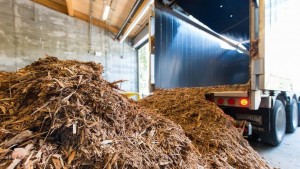 A Bioenergy Roadmap for South Australia, released by Minister Resources and Energy Minister Tom Koutsantonis, highlighted suitable areas to develop the industry. Source: Indaily
A Bioenergy Roadmap for South Australia, released by Minister Resources and Energy Minister Tom Koutsantonis, highlighted suitable areas to develop the industry. Source: Indaily
The report comes before Premier Jay Weatherill and Climate Change Minister Ian Hunter attend global climate change talks in Paris next month.
Mr Koutsantonis said by matching biomass feedstock information to companies with a demand for electricity and heat, a number of appropriate areas were identified for further investigation.
“The project has significantly increased information about the potential location and use of bioenergy generation in the state,” he said.
“It shows the most prospective area for bioenergy is Penola and Mount Gambier, while purpose-grown biomass crops are best suited to the areas of Peake, Naracoorte, Elliston, Spalding and Cummins.”
Wattle Range Council Mayor Peter Gandolfi, which takes in Penola, said a bioenergy plant would be an economic boon for the region and a natural step to expand the area’s forestry industry.
“There has been interest from the private sector to invest in the council region,” he said.
“It’s one of the goals of our economic strategy because timber is a big part of our area.
“[Forestry] is strong at the moment and what we have is residual waste so maybe we can value-add through biomass energy or through biomass products like wooden pallets to export.”
Mr Koutsantonis said bioenergy could be produced from organic matter, derived from plants, animals or manufactured food waste, known as biomass or biofuel feedstocks.
“Biomass resources are a sustainable and environmentally-friendly feedstock that will contribute significantly to a diversifying our energy sources.
“Electricity, transportation fuels, chemicals and materials currently produced from petroleum and natural gas could instead be produced from these biomass resources.
“Bioenergy could play a significant role in coming years by supplying a localised energy source in low input, peak demand periods.”
Mr Koutsantonis said the government wanted to unlock the full potential of SA’s resources, energy and renewable assets.
“As the costs of traditional energy such as electricity and gas continue to rise, we have the potential to make greater use of existing and new feedstock and allow bioenergy to contribute to the state’s low carbon future.”
Stage two of the project will involve relevant industries in the hotspot areas to investigate the feasibility of developing specific projects.





